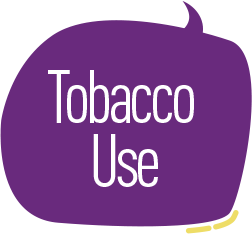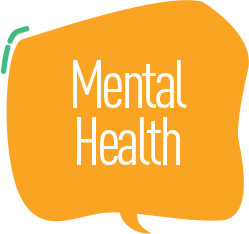Let’s talk about smoking and tobacco use.

Tobacco is one of the world’s oldest drugs. It’s no secret that smoking tobacco is dangerous. Not only does it cause cancer, but it also elevates heart rate and blood pressure, constricts blood vessels, irritates lung tissue and diminishes your ability to taste and smell.
The good news is smoking isn’t as popular with youth as it used to be. But it’s still a dangerous substance that needs to be talked about within your family. After all, it can take as little as one cigarette for your child to get addicted.
What parents need to know
Tobacco is an agricultural crop, most commonly used to make cigarettes.
- It is grown all over the world and supports a multi-billion-dollar industry.
- Its psychoactive ingredient is nicotine, a nervous-system stimulant that can cause body and brain disruptions.
- Cigarette smoke contains more than 7,000 chemicals, 70 of which are known to cause cancer.
Tobacco products can come in many different forms:
- Cigarettes
- Cigars
- Bidis—thin, hand-rolled cigarettes imported from Southeast Asia clove cigarettes
- Kreteks—cigarettes imported from Indonesia that contain cloves and other additives
- Loose-leaf tobacco—smoked in pipes and hookahs, an Asian smoking pipe with a long tube that passes through an urn of water
- Smokeless tobacco—chewing tobacco and snuff, finely ground tobacco placed between the gum and lip
- Electronic nicotine delivery systems (ENDS)—noncombustible tobacco products, including e-cigarettes (vaping)
Tobacco use statistics:
- One in every five deaths each year is caused by prolonged smoking.
- On average, the life expectancy of a smoker is 10 years less than a nonsmoker.
- Nearly 9 out of 10 smokers start before the age of 18, and almost all start smoking by age 26.
- Every day, more than 3,200 children and teens under 18 years old smoke their first cigarette.
- For every person who dies from a smoking-related disease, 20 more people suffer from a smoking-related illness.
- Smoking causes cancer, heart disease, stroke, diabetes and lung diseases, including emphysema, bronchitis, and chronic airway obstruction.
- Tobacco is the leading cause of preventable death in the world.
What the law says
- As of November 2020, the legal age to buy cigarettes at a store in New York is 21.
- On June 22, 2009, President Barack Obama signed into law the Family Smoking Prevention and Tobacco Control Act, giving the U.S. Food and Drug Administration (FDA) the power to regulate the manufacturing, marketing, and sale of tobacco products.
Additional Resources
Starting the conversation
- Start early. It is a good idea to start talking with your children about the dangers of cigarettes when they are five or six years old. Keep the conversation going as your children get older.
- Make it a two-way conversation. Give your children a chance to speak openly. Ask them if they know people who smoke and how they feel about it.
- Know your child’s friends. As kids get older, their friends influence their choices more. The risk that your children will smoke increases if their friends smoke.
- Stay connected. Studies show that kids who feel close to their parents are less likely to start smoking than kids who are not close to their parents.
- Be clear about your rules and expectations. Kids who know their parents are paying attention and disapprove of smoking are less likely to start.
- Talk about how the tobacco industry targets kids. Cigarette companies spend billions of dollars each year to try to get people to smoke. Ask your children if they want to support companies that make products that make people sick.
Talk about the risks of tobacco. Your child might be too young to understand or worry about things like cancer or heart disease. Let them know that smoking can affect their health and other areas right away, including:
- Breathing problems. By senior year of high school, kids who smoke are more likely to become short of breath, have coughing fits, wheeze, develop asthma, and get sick often than kids who never smoked.
- Addiction. Explain that cigarettes are made to be as addicting as possible. Tell your child that they will have a very hard time quitting if they start to smoke.
- Money. Cigarettes are expensive. Have your child figure out how much it would cost to buy a pack a day for six months, and what they could buy with that money instead.
- Smell. Long after a cigarette is gone, the smell lingers on the smoker’s breath, hair, and clothes. Because they are used to the smell of cigarettes, smokers can stink of smoke and not even know it.











